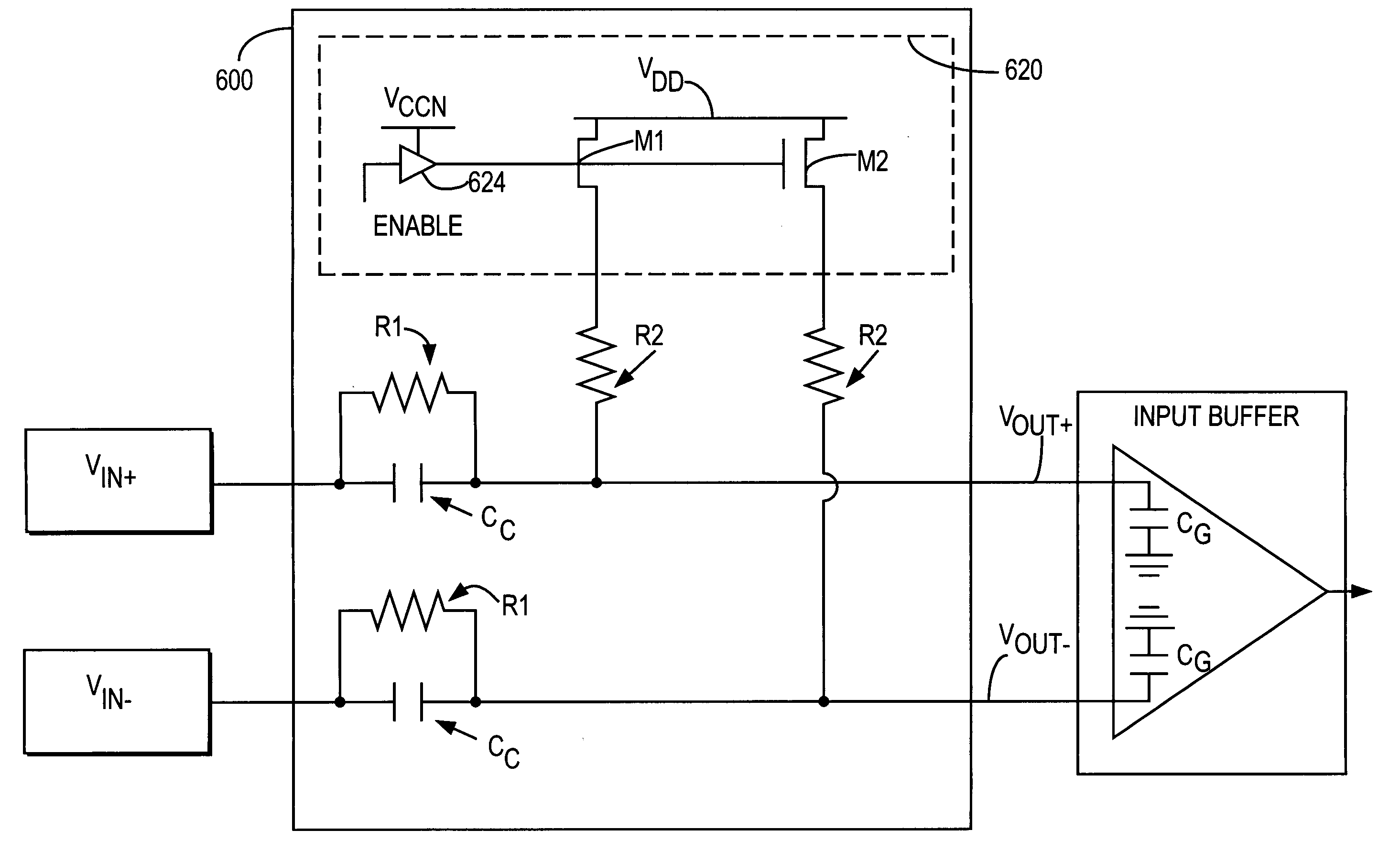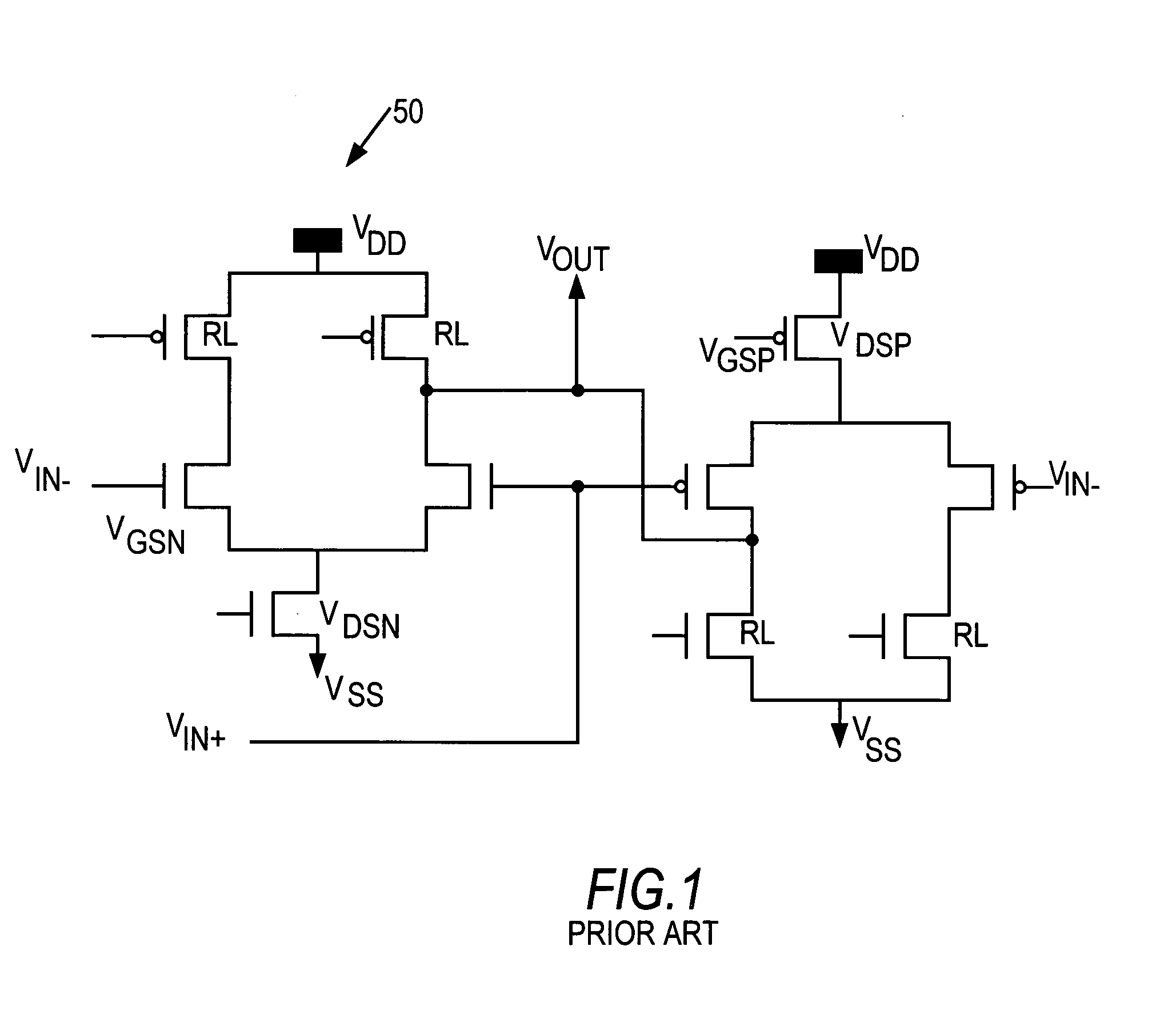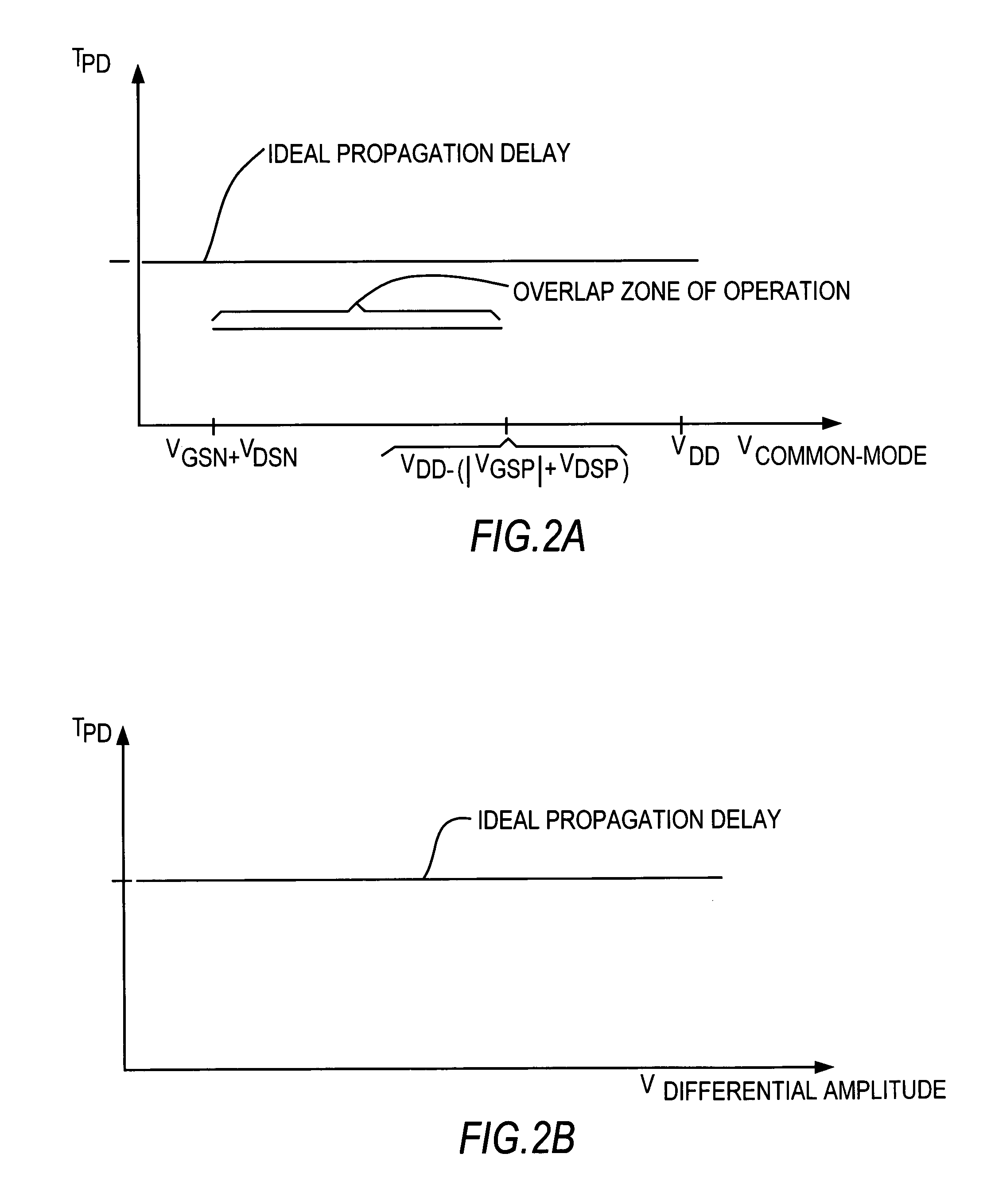Circuits and techniques for conditioning differential signals
a differential signal and circuit technology, applied in the field of circuitry and methods, can solve the problems of jitter of the output signal produced by the input buffer, erratic appearance, and inability to adapt to several drawbacks, and achieve the effect of increasing the range of common-mode voltages in which the input buffer can operate, increasing propagation delay, and increasing the range of common-mode voltages
- Summary
- Abstract
- Description
- Claims
- Application Information
AI Technical Summary
Benefits of technology
Problems solved by technology
Method used
Image
Examples
Embodiment Construction
[0022]FIG. 1 shows a known multi-standard differential input buffer 50 that receives a differential input signal and produces a single output signal. In order for input buffer 50 to support multiple input standards, buffer 50 preferably operates over a wide range of common-mode voltage, while at the same time processing differential signals with a substantially constant propagation delay as a function of common-mode voltage. The common-mode in differential signaling is the DC level that should be midway between the two differential signals. The common-mode operational range of buffer 50 is generally defined by the saturation characteristics of the transistors. It is therefore preferable to maintain the transistors in saturation, otherwise when the transistors begin to fall out of saturation, propagation delays begin to increase.
[0023]In general, buffer 50 operates as follows. When the common-mode input voltage is less than combined gate-to-source voltage and drain-to-source voltage ...
PUM
 Login to View More
Login to View More Abstract
Description
Claims
Application Information
 Login to View More
Login to View More - R&D
- Intellectual Property
- Life Sciences
- Materials
- Tech Scout
- Unparalleled Data Quality
- Higher Quality Content
- 60% Fewer Hallucinations
Browse by: Latest US Patents, China's latest patents, Technical Efficacy Thesaurus, Application Domain, Technology Topic, Popular Technical Reports.
© 2025 PatSnap. All rights reserved.Legal|Privacy policy|Modern Slavery Act Transparency Statement|Sitemap|About US| Contact US: help@patsnap.com



